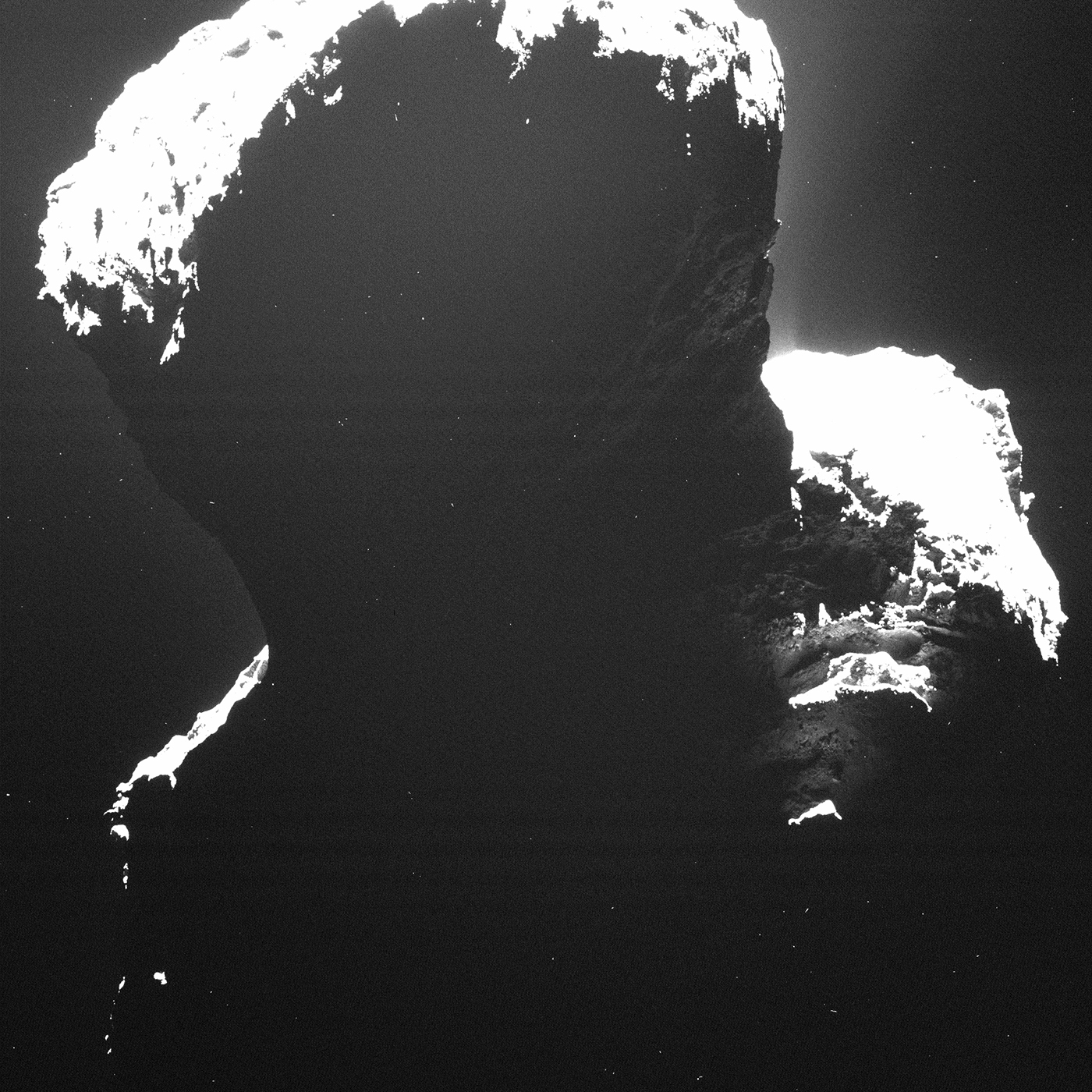Since its arrival at comet 67P/Churyumov-Gerasimenko, the European Space Agency’s Rosetta spacecraft has been surveying the surface and the environment of this curiously shaped body. But for a long time, a portion of the nucleus — the dark, cold regions around the comet’s south pole — remained inaccessible to almost all instruments on the spacecraft.
For most of the comet’s orbit, the northern hemisphere experiences a very long summer, lasting over 5.5 years, while the southern hemisphere undergoes a long, dark and cold winter. However, a few months before the comet reaches perihelion — the closest point to the sun along its orbit — the situation changes, and the southern hemisphere transitions to a brief and very hot summer.
When Rosetta arrived at 67P/C-G in August 2014, the comet was still experiencing its long summer in the northern hemisphere, and regions on the southern hemisphere received very little sunlight. Moreover, a large part of this hemisphere, close to the comet’s south pole, was in polar night and had been in total darkness for almost five years.
For the first several months after Rosetta’s arrival at the comet, only one instrument on the spacecraft could observe and characterize the cold southern pole of 67P/C-G: the Microwave Instrument for Rosetta Orbiter (MIRO).
“We observed the ‘dark side’ of the comet with MIRO on many occasions after Rosetta’s arrival at 67P/C-G, and these unique data are telling us something very intriguing about the material just below its surface,” said Mathieu Choukroun from NASA’s Jet Propulsion Laboratory (JPL), Pasadena, California, lead author of the study.
Observing the comet’s southern polar regions, Choukroun and colleagues found significant differences between the data collected with MIRO’s millimeter and sub-millimeter wavelength channels. These differences might point to the presence of large amounts of ice within the first few tens of centimeters below the surface of these regions.
